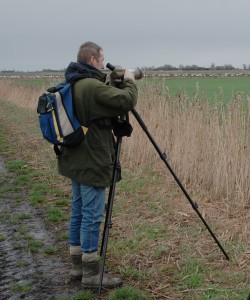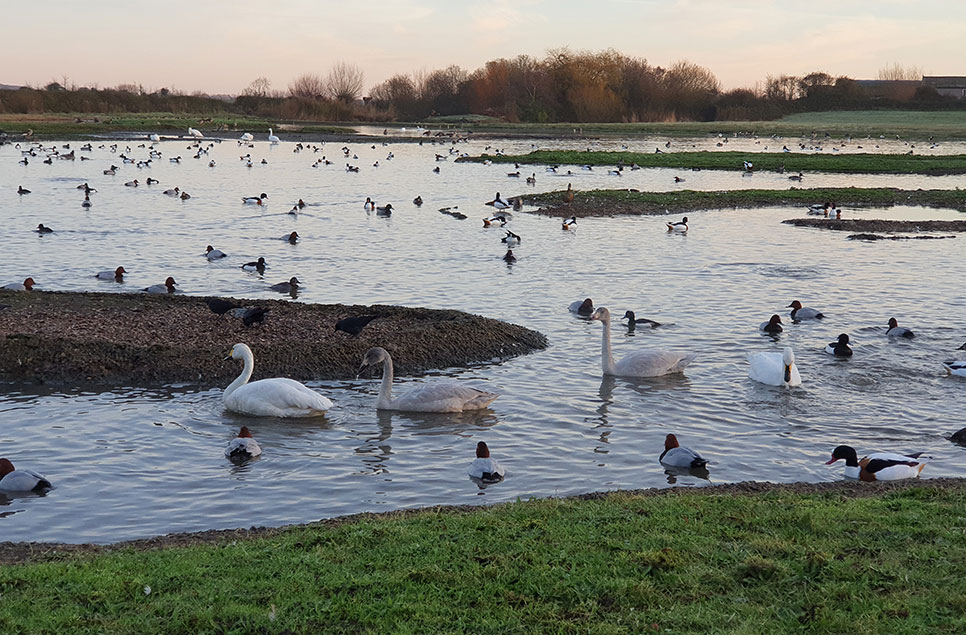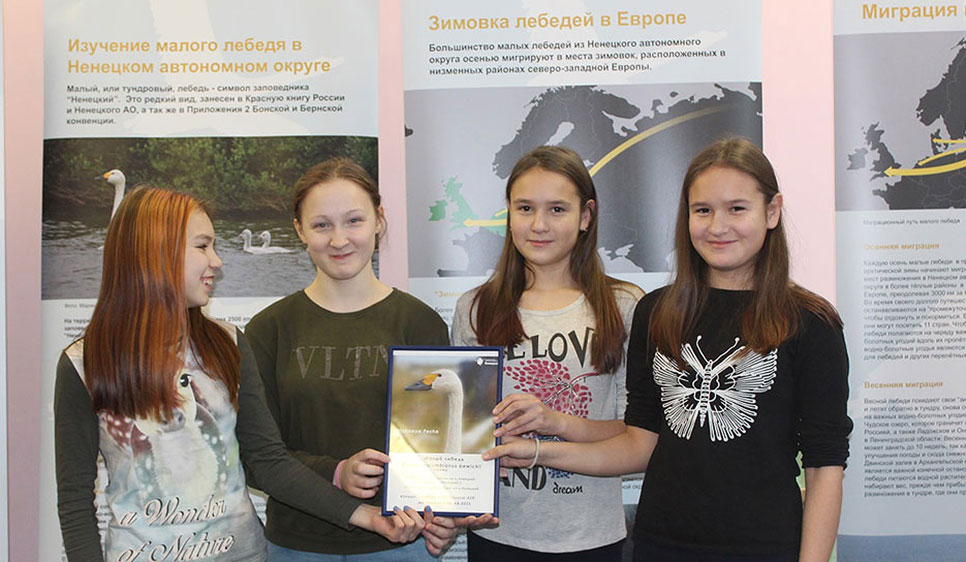The Big Cygnet Count!
After the brief cold snap numbers have stabalised and many Bewick’s swans remain in eastern Europe. Those that have reached the Netherlands are feasting on maize and other grains, a solid staple for those visiting arable areas which in recent years, have become increasingly favoured over the more traditional swan sites (W. Tijsen).

There are now several hundred birds on the Dutch/Belgium border, moving between the two countries (W. Tijsen). Swan observer Martin Jansen recorded 2,204 Bewick’s on Lakes Drontermeer and Veluwe, of which only 1.6% were cygnets. Martin has spent many years watching the swans on these lakes and has noticed that very few cygnets visit. He suspects that this is mainly down to food. Although the lakes are generally shallow (55-70cm deep), the aquatic stonewort plants are quite a stretch for the youngsters who generally do not like feeding in water deeper than 45cm. Parents often prefer to take their cygnets to fields nearby where there is beet to feed on. There is often variability in the number of cygnets found at various wintering sites and so surveys of a range of flocks in different places are needed for an accurate assessment of breeding success.
So this weekend, hundreds of swan enthusiasts will be heading out to the fields to count cygnets and adult birds in flocks across Northwest Europe. The 'Big Cygnet Count', co-ordinated by Jan Beekman and Wim Tijsen, will shed some light on whether the Bewick's have had a good breeding season this year. The swans have suffered from a series of poor breeding seasons in recent years, likely in part to be connected with variable weather conditions on arctic Russian breeding grounds. Given the sharp population decline seen since the mid-1990s, the swans could certainly do with some good news...
WWT will be co-ordinating counts made in Britain. There are now over 100 Bewick’s swans regularly attending the daily feeds at Slimbridge and over 500 around Welney on the Ouse Washes (counts made by WWT/RSPB).


